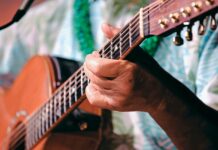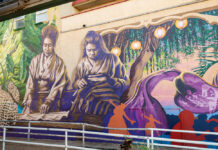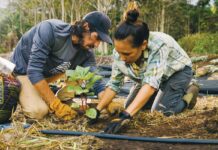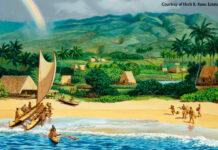In Cuba, the crew toured Organopónico Vivero Alamar, one of Havana’s largest urban gardens. Created in response to the island’s isolation, such gardens are models of how communities can build food security through organic farming, composting and permaculture. In the Galápagos Islands, the crew learned about the Giant Tortoise Restoration Initiative, which aims to bring the population—decimated by humans and introduced predators such as rats and pigs—back to historical numbers. Such lessons in sustainability and native-species conservation spoke loudly to Hōkūle‘a’s crew, many of whom are involved in addressing the same issues at home.
Every place she traveled, Hōkūle‘a embraced the host culture. In Cape Town, Hawaiian students gathered at St. Mary’s school and taught a haka (Polynesian war dance). The South African students then shared traditional Zulu songs and dances, using a bucket for a drum, then asking the Hawaiian students to lend their pahu (drum). From a Hawaiian drum sounded an African rhythm, and everyone danced.
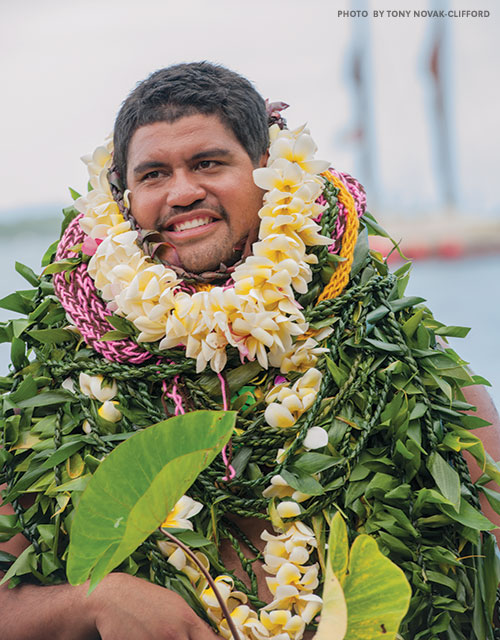
Now a new generation of voyagers is writing the next chapter of Hōkūle‘a’s story. Among them are two young Maui crewmembers, Nakua Konohia-Lind and Kalā Baybayan Tanaka. They take to the helm with confidence as Hōkūle‘a sails around the islands during her yearlong Mahalo Hawai‘i (Thank you, Hawai‘i) homecoming tour, which began in August 2017.
“Culturally, our generation is on fire!” says Nakua. Last November, the twenty-four-year-old completed his first leg of the Hawai‘i tour as Hōkūle‘a’s youngest captain, bringing the canoe to his remote hometown of Hāna.
“That [was] the first time the kids of Hāna touched that canoe. The first time ever,” the bright-eyed Hawaiian says proudly. He credits Hōkūle‘a’s influence for inspiring the revival of hula, kalo planting, and other cultural traditions. After sailing on thirteen of the twenty-seven legs of the worldwide voyage, Nakua remembers most vividly the smiles of kids at every stop as they engaged with Hōkūle‘a and her crew.
Both Nakua and fellow crewmember Kalā Baybayan Tanaka recognize the value of the canoe as a classroom, and cite numerous lessons they learned during their travels.
Kalā is the education coordinator for Maui’s own voyaging-canoe nonprofit, Hui O Wa‘a Kaulua. In New York, she took cues from the Billion Oyster Project, a school-based effort to restore the oyster population and return balance to the polluted ecosystem in New York Harbor. Seeing the enthusiasm of the proactive students there, she encouraged her Maui students to design their own sustainability project.
“One of their ideas was reforestation. Twenty years from now, they probably will still remember those trees that they planted because they’ll have a sense of ownership,” Kalā believes. “When you allow the students to come up with the solution for the problem, and have teachers there to help them succeed, amazing things can happen.”
Nakua’s aha moment came in Mauritius, where he was inspired by a marine lab that taught students about healthy reef systems. What was remarkable to him was that the lab is mobile, and can reach many more students. “It was like a big, ol’ freight truck, but in the back, instead of refrigerators, it had fish tanks!”


